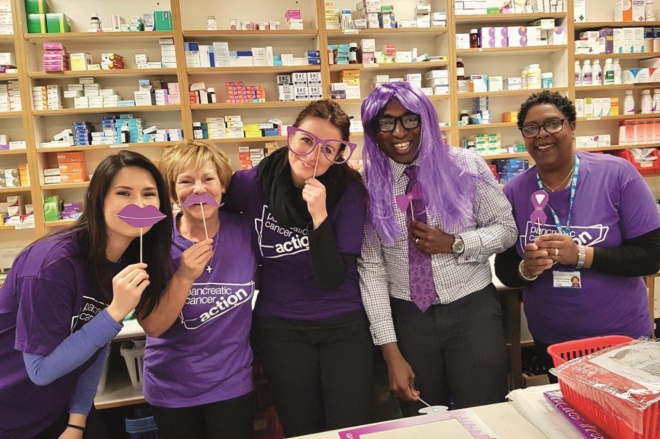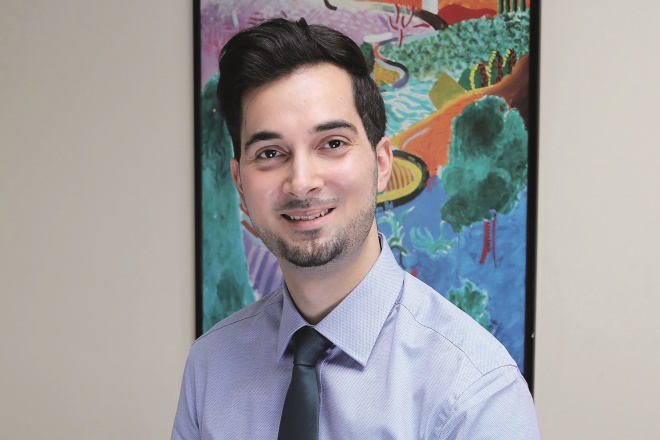
Shutterstock.com
Social media platforms are the modern way to develop a pharmacy business. They enable people to promote their expertise, talk about products and services and raise the profile of the profession locally, nationally and even globally. It is also a positive way for pharmacy professionals to enhance their own careers.
According to company formation experts Turner Little, 60% of businesses across all industries use social media sites, and this is slightly less (57%) for small businesses such as community pharmacies. However, it is now expected that companies have a presence on social media platforms (see Box 1). Turner Little claims that 77% of Twitter users feel more positive towards a company that responds to one of their tweets.
Ade Williams, superintendent pharmacist at Bedminster Pharmacy in Bristol, says social media ensures local pharmacists remain accessible and relevant because they can take part in ongoing health debates and share their insight, which people value.
“Social media is a great way to communicate,” says Williams. “We never post about our own personal activities but get pharmacy colleagues to post about one another.”
Here is how your pharmacy can establish a credible presence on social media.
1. Choose the right platform
What makes social media such a powerful marketing tool is that it is free. The biggest investment is the time required to ensure the most appropriate content is posted on the right website. Some platforms specifically target a business audience (LinkedIn) or businesses and individuals (Facebook), while others are more news-led (Twitter) or visual (Instagram/Snapchat/YouTube).
Gavin Birchall, pharmacist and managing director of DOSE Design and Marketing, a specialist pharmacy marketing agency, says he uses social media as a showcase for the work his company has carried out for different pharmacy clients.

Source: Courtesy of Gavin Birchall
Gavin Birchall from DOSE Design and Marketing advises pharmacy professionals to only post content they feel completely comfortable with others seeing
“Our team has done pretty much every job in a community pharmacy, from summer student to main board director, which gives us great insight,” says Birchall. “We help pharmacy people promote themselves better on social media and in doing so, promote the profession.”
Box 1: Social media platforms
Twitter: The online news and social networking service where business and personal users post and interact with messages (known as tweets) restricted to 280 characters. Keep your posts relevant and authentic and avoid being too “salesy”.
Facebook: Pharmacists can share news, comments, photographs and links to other content on the internet, as well as advertise to very specific and targeted audiences. People can contact the pharmacy via Facebook and find out more about specific local healthcare services.
LinkedIn: This is the social media site for professionals. Pharmacy staff can create a profile outlining their career to date and write thought-leadership blogs. They can connect to others in the industry and send them messages as part of an online networking hub. Pharmacy jobs are advertised and recruiters often utilise the site to find new talent.
YouTube: The video-sharing site is owned by Google and is increasingly being used as a business tool. Companies and individuals can film informative health videos for existing and potential customers. To succeed on YouTube, a pharmacy does need to be competent at video production or work with someone who can make the videos look professional.
Instagram: This picture-based site lets businesses promote their products and services to a targeted and interested audience without having to spend too much on paid advertising. It is a great way to convey a pharmacy’s personality by using images to support the business or specific health campaigns.
Snapchat: One of the fastest-growing social networks, on Snapchat pharmacists can produce daily stories and upload video from live in-pharmacy events.
2. Differentiate yourself
Any pharmacy that wants to raise its profile using social media must be able to differentiate itself. Birchall says this can include creating a distinctive visual and verbal identity using pictures or video to grab attention.
“You have to put in the effort to learn the basics and consider what your audience wants to hear from you and how you can help them,” he says.
“Always be authentic, avoid being formulaic and select your social media platform carefully because they are all different,” adds Birchall.
3. Rotate responsibility for social media accounts
Pharmacy staff can be encouraged to use various social media platforms to post their own thoughts and share posts about health initiatives to promote pharmacy.
Williams says the staff at Bedminster Pharmacy share responsibility for all social media accounts to enhance the skills of the team: “We rotate responsibility for the Twitter and Facebook accounts so that more people are skilled in using the technology and different topics are mentioned.”

Source: Courtesy, Ade Williams
The team at Bedminster Pharmacy share responsibility for all socia media accounts to enhance the skills of the entire team
4. Give appropriate training
Training should be provided to all staff so the whole team knows what is and what is not acceptable. For example, someone may not realise they are revealing something confidential. Employers should also inform staff if their social media activity is being monitored.
Birchall advises pharmacy professionals to only post or share content they are completely comfortable with and that they would not mind other people seeing: “Run a list of important people through your mind before you share — your grandparents, your parents, your children, your friends, your boss, the General Pharmaceutical Council (GPhC), the police. If what you are about to share fails any of them, don’t share it.”
5. Implement a social media policy
All pharmacies should implement a social media policy to ensure there are no unacceptable posts or mentions made by staff that could damage the business or its reputation.
At Bedminster Pharmacy the rules for posting are very strict. Each post or comment must relate to one or more of the company’s four core values: patient advocacy, information, education and promoting self-care. Williams says pharmacy professionals must also be aware of the ethical rules and issues around confidentiality, and the best advice is to follow the Royal Pharmaceutical Society’s social media guidelines and the GPhC’s standards for demonstrating professionalism online.
These include:
- Maintaining professional boundaries;
- Being clear about what you want to achieve from using social media;
- Watching and learning before jumping into debates and saying something you might regret;
- Being aware that when you post on social media you become a publisher and can be sued for libel, copyright infringement and data protection breaches;
- Being careful when engaging about medicines and drugs because patients as well as industry peers will read your posts.
6. Be prepared for negative comments
Williams states that pharmacy professionals should be prepared for negative comments on social media. “If we get negative feedback from anything we post, we follow the standard NHS complaints procedure,” he says. Williams also adds that there have been times when individuals have expressed displeasure, but were then impressed by how the pharmacy team responded.
“Remember that anything you share on social media has the potential to be seen by literally anyone for the rest of time. It can feel like you are hidden behind your screen when in fact you are more exposed than in any other aspect of your life,” adds Birchall.
Social media offers pharmacies and pharmacists a cost-effective way to raise their profile and promote their expertise to their local community and beyond. The secret is to choose wisely which sites to use and when, and to ensure everyone is clear about what information to post and when it is best to stay quiet.
Box 2: YouTube — the role of video
YouTube is one social media platform that is often ignored by pharmacists, but video can be the perfect way to promote their business and expertise.
One pharmacist who noticed a gap in the market was Abraham Khodadi, a community and practice pharmacist, whose YouTube channel ‘Abraham the Pharmacist’ has around 3,400 subscribers. The channel has helped him gain more than 6,400 followers on Facebook and 3,400 followers on Instagram.

Source: Courtesy of Abraham Khodadi
Abraham Khodadi noticed the lack of educational videos created by pharmacists.
He loves videos and science so he decided to put his two passions together and produce online content that informs and entertains viewers. Two of his recent health videos are ‘How to start taking metformin to reduce possible side effects’ and ‘How to do good eyelid hygiene at home to help prevent blepharitis’.
“I noticed a huge void in terms of pharmacists and pharmacy as a profession using social media in this way,” he says. “With YouTube you can target the public and make your content patient specific.”
Khodadi tries to post at least one video each week and his content has had around 500,000 views. It has been shared on other social media pages, including by NHS Choices and the Medicines and Healthcare products Regulatory Agency. He is also working with the BBC, which has been impressed with his content.
“I’m trying to make pharmacy more inclusive and give people a better understanding of the profession and what we do. Social media allows you to reach a larger audience.”
He adds that the social media guidance published by the Royal Pharmaceutical Society and the General Pharmaceutical Council is useful because it ensures professional standards are met.
So what are his top tips for other pharmacists considering using video?
“Be unique, be creative and play to your strengths,” says Khodadi. “Don’t just think it’s a quick win because it takes a lot of work, time and dedication behind the scenes to make social media video a success.”
To view Khodadi’s YouTube channel, visit:


